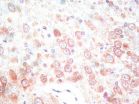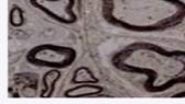(Press-News.org) Wally Broeker, the first person to alert the world to Global Warming, has called for atmospheric CO2 to be captured and stored underground. He says that Carbon Capture, combined with limits on fossil fuel emissions, is the best way to avoid global warming getting out of control over the next fifty years. Professor Broeker (Columbia University, New York) made the call during his presentation to the International Carbon Conference in Reykjavik, Iceland, where 150 scientists are meeting to discuss Carbon Capture and Storage.
He was presenting an analysis which showed that the world has been cooling very slowly, over the last 51 million years, but that human activity is causing a rise in temperature which will lead to problems over the next 100,000 years.
"We have painted ourselves into a tight corner. We can't reduce our reliance of fossil fuels quickly enough, so we need to look at alternatives.
"One of the best ways to deal with this is likely to be carbon capture – in other words, putting the carbon back where it came from, underground. There has been great progress in capturing carbon from industrial processes, but to really make a difference we need to begin to capture atmospheric CO2. Ideally, we could reach a stage where we could control the levels of CO2 in the atmosphere, like you control your central heating. Continually increasing CO2 levels means that we will need to actively manage CO2 levels in the environment, not just stop more being produced. The technology is proven, it just needs to be brought to a stage where it can be implemented.
Wally Broeker was speaking at the International Carbon Conference in Reykjavik, where 150 scientists are meeting to discuss how best CO2 can be removed from the atmosphere as part of a programme to reduce global warming.
Meeting co-convener Professor Eric Oelkers (University College London and University of Toulouse) commented:
"Capture is now at a crossroads; we have proven methods to store carbon in the Earth but are limited in our ability to capture this carbon directly from the atmosphere. We are very good at capturing carbon from factories and power stations, but because roughly two-thirds of our carbon originates from disperse sources, implementing direct air capture is key to solving this global challenge".
INFORMATION:
Notes
Please mention the International Carbon Conference in any story from this press release.
The international Carbon Conference takes place in Reykjavik, Iceland, from 25-29 August 2014. Conference website, https://www.or.is/en/projects/international-carbon-conference-2014
For more information, please contact the European Association of Geochemistry press officer, Tom Parkhill, tom@parkhill.it telephone +39 349 238 8191
Global warming pioneer calls for CO2 to be taken from atmosphere and stored underground
2014-08-28
ELSE PRESS RELEASES FROM THIS DATE:
Neuroscientists watch imagination happening in the brain
2014-08-28
"You may say I'm a dreamer, but I'm not the only one," sang John Lennon in his 1971 song Imagine.
And thanks to the dreams of a BYU student, we now know more about where and how imagination happens in our brains.
Stefania Ashby and her faculty mentor devised experiments using MRI technology that would help them distinguish pure imagination from related processes like remembering.
"I was thinking a lot about planning for my own future and imagining myself in the future, and I started wondering how memory and imagination work together," Ashby said. "I wondered if they ...
Protected areas proven to protect biodiversity
2014-08-28
Protected areas conserve biodiversity and more action is needed to ensure safeguards are in place to protect these areas, researchers say.
Published in PLOS ONE, researchers from Monash University, Stellenbosch University and the University of Exeter, used meta-analysis - combining results from different studies - to look at the past 30 years of research into these areas, to determine whether they actually protect biodiversity.
Dr Bernard Coetzee, School of Biological Sciences, said protecting an area from human exploitation made common sense, however, up until now ...
Serotonin transporter is a mifepristone pharmacological target
2014-08-28
In the central nervous system, serotonergic transmission is critically regulated by serotonin reuptake through the serotonin transporter. As a crucial pharmacological target of antidepressants, the role of erotonin transporter in treatment of major depression is well-established. Dr. Chaokun Li and co-workers from Xinxiang Medical University in China cloned the human brain serotonin transporter into Xenopus oocytes, to establish an in vitro expression system. Two-electrode voltage clamp recordings were used to detect serotonin transporter activity. Their results show that ...
Vasopressin decreases neuronal apoptosis during cardiopulmonary resuscitation
2014-08-28
Epinephrine has been shown to be a first-choice drug for cardiopulmonary resuscitation. Nevertheless, its β-adrenergic effect probably increases myocardial oxygen consumption and leads to severe cardiac and cerebral injuries; moreover, epinephrine does not elevate long-term survival rates. The American Heart Association and the European Resuscitation Council recently recommended that vasopressin can be used for cardiopulmonary resuscitation, instead of epinephrine. However, the guidelines do not discuss the effects of vasopressin during cerebral resuscitation. According ...
Sciatic nerve repair using adhesive bonding and a modified conduit
2014-08-28
When repairing nerves with adhesives, most researchers place glue directly on the nerve stumps, but this method does not fix the nerve ends well and allows glue to easily invade the nerve ends. Ordinarily, nerve conduits are cylindrical. However, it is difficult to insert the nerve ends into the conduit because the nerve is soft and there is frictional resistance. Xiangdang Liang and co-workers from the General Hospital of Chinese PLA designed a special conduit for the adhesive technique and defined the best parameters for its use through in vitro testing, and then repaired ...
New technique uses fraction of measurements to efficiently find quantum wave functions
2014-08-28
The result of every possible measurement on a quantum system is coded in its wave function, which until recently could be found only by taking many different measurements of a system and estimating a wave function that best fit all those measurements. Just two years ago, with the advent of a technique called direct measurement, scientists discovered they could reliably determine a system's wave function by "weakly" measuring one of its variables (e.g. position) and "strongly" measuring a complementary variable (momentum). Researchers at the University of Rochester have ...
Getting graffiti off a masterpiece (video)
2014-08-28
WASHINGTON, August 28, 2014 — Works of art can take years to create and just seconds to deface. It happened to Mark Rothko's "Black on Maroon" while on display at the Tate Modern gallery in London in 2012. A vandal tagged the painting, landing him two years in jail. Restoration experts teamed up with Dow Chemical to create a cleanser that would get rid of the graffiti and leave the art intact. Learn all about it in this episode of Speaking of Chemistry. The video is available at https://www.youtube.com/watch?v=eGR_AxXdSk0 .
INFORMATION:
Speaking of Chemistry is a production ...
Warm thanks: Gratitude can win you new friends
2014-08-28
Parents have long told their children to mind their Ps and Qs, and remember to say thank you. Now the evidence is in on why it matters.
A UNSW Australia-led study has shown for the first time that thanking a new acquaintance for their help makes them more likely to seek an ongoing social relationship with you.
"Saying thank you provides a valuable signal that you are someone with whom a high quality relationship could be formed," says UNSW psychologist Dr Lisa Williams, who conducted the research with Dr Monica Bartlett of Gonzaga University in the US.
The study, to ...
From nose to knee: Engineered cartilage regenerates joints
2014-08-28
Human articular cartilage defects can be treated with nasal septum cells. Researchers at the University and the University Hospital of Basel report that cells taken from the nasal septum are able to adapt to the environment of the knee joint and can thus repair articular cartilage defects. The nasal cartilage cells' ability to self-renew and adapt to the joint environment is associated with the expression of so-called HOX genes. The scientific journal Science Translational Medicine has published the research results together with the report of the first treated patients. ...
Drug shows promise for subset of stage III colon cancer patients
2014-08-28
Bethesda, MD (Aug. 28, 2014) — A subset of patients with stage III colon cancer had improved survival rates when treated with irinotecan-based therapy, according to a new study in Gastroenterology1, the official journal of the American Gastroenterological Association.
When added to the standard chemotherapy treatment — fluorouracil and leucovorin — adjuvant irinotecan therapy improved overall survival rates for patients with the CpG island methylator phenotype (CIMP). CIMP is seen in about 10 to 20 percent of colorectal cancers. Patients with CIMP-negative tumors, however, ...



